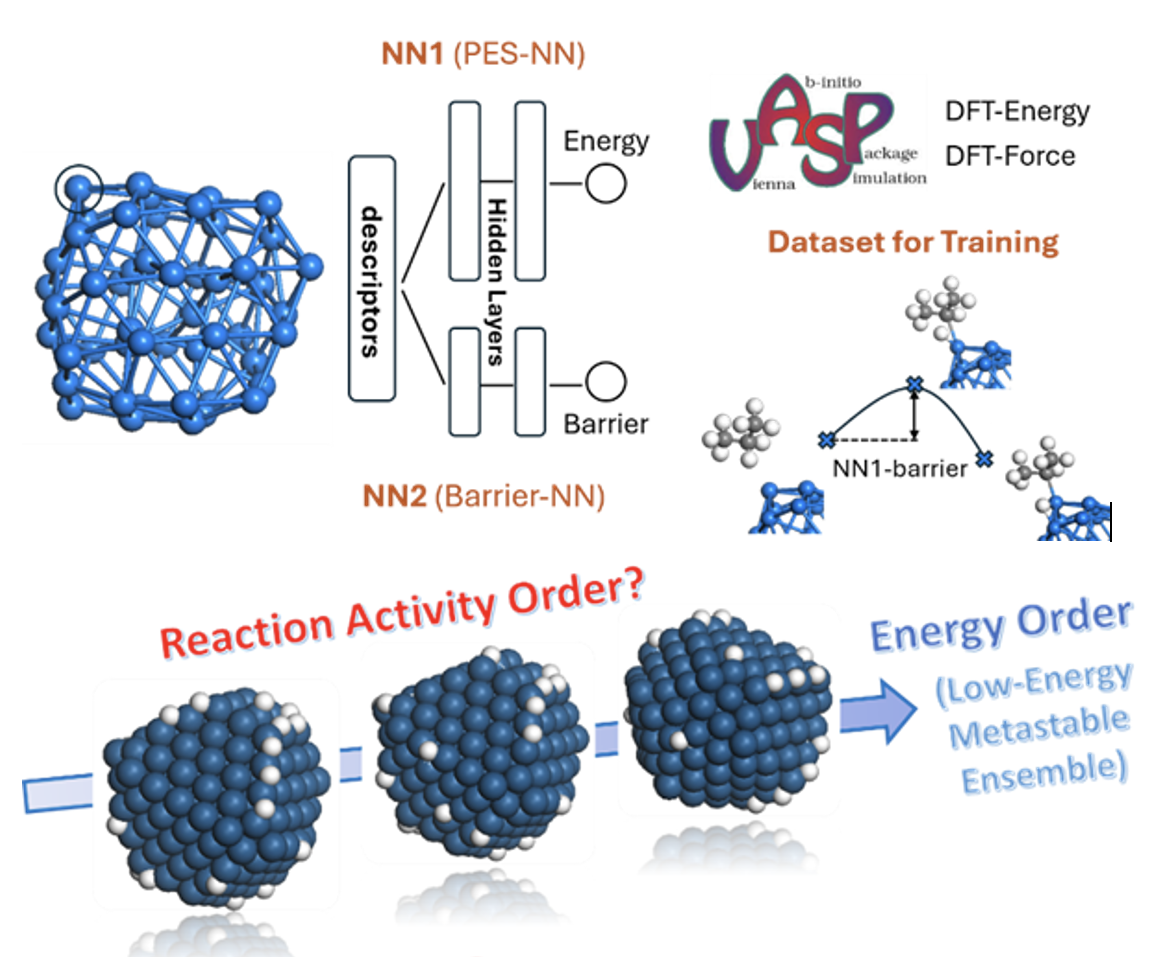
Our research focuses on applying machine learning techniques to atomic simulations in theoretical heterogeneous catalysis. Specifically, we are investigating the structure of platinum nanoparticles under hydrogen conditions, known as PtxHy clusters, and their catalytic behavior in propane dehydrogenation. Our goal is to generate a comprehensive structure library of PtxHy clusters using potential energy surface (PES) sampling and machine learning potentials, covering various compositions. We then employ a neural network model to learn the reaction barriers of propane dehydrogenation pathways at specific Pt surface sites.
There are two neural network (NN) potentials involved in this study. The first is a conventional NN potential designed to predict the energy and forces of a structure at the DFT level. This potential, namely PES-NN, effectively samples the PES, capturing both structural variations and reaction pathways. The second NN potential is trained to observe critical insights derived from the PES-NN after long-time sampling works, such as reaction barriers along specific pathways. This model directly provides the understanding of the structure-activity relationship in heterogeneous catalysis.